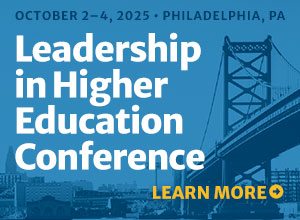Student enrollment stands as a high priority for almost all higher education institutions. Practitioners who work directly in enrollment management are far too familiar with the broken-record-like repeating the question, “What are you doing to increase enrollment?”
According to the Ruffalo Noel Levitz 2016 Report: Cost of recruiting an undergraduate student for four-year and two-year institutions, the number of full-time admissions/recruitment staff at four-year public institutions is 125:1, while the ratio is 225:1 at two-year public institutions. In other words, two-year admissions/recruitment staffs must be equipped to handle a larger influx of prospective and new students with half the professional staffing capabilities.
Numbers, and more numbers
As statewide higher education enrollment in Texas has been slowly rising, a more in-depth view shows that public two-year colleges have been facing a bear-like trend. The Texas Higher Education Coordinating Board statewide report for enrollment shows an inverse relationship with regard to public four-year and two-year institutional enrollment growth. As four-year colleges continue to grow, community college experience stunted growth.
Educational practitioners have argued to great lengths about best practices, or methods that work best for their institution, but the reality is that a four-year public institution outspent a two-year institution by $460 to recruit a single undergraduate student in 2015 (Ruffalo Noel Levitz, 2016).
According to the Texas Education Agency recent report around 300,000 students will graduate from high school this academic year, and close to 56 percent will be college-bound. We know that 12 percent of students leave the state of Texas to go to college.
So what does this mean for higher education institutions in Texas? If we were to allocate the remaining college-bound students who will stay in state amongst the 278 institutions, that results in 468 students per institution. This gives new meaning to “Every student counts.” Institutions must focus which resources are being spent to persuade a prospective student to attend its school in the fall rather than institution A, B, or even C.
Defining the recruiting process
When student affairs departments work independently and operate in silos, time and effort are lost. Developing a systematic and effective channel of communication is vital for the admissions and recruiting process. If staff members do not understand the student-intake process, how can we expect a student to understand the admissions process?
As part of our institutional recruitment plan at Howard, we have incorporated a roadmap that funnels applicants through a progression system that includes admissions, recruiting, academic advising, and ultimately student registration for courses and new student orientation. Admissions/recruiting staff members are no strangers to the traditional admissions funnel, but the questions we must ask are first, how to strengthen the model and then, how to make the method work for our institution.
When I started my career at Howard, I wanted to perform an internal audit and examine the processes of how we interact with students. Sometimes taking a step back and examining the interworking of our operation provides the best insight because over time we become used to the motions and succumb to tunnel vision. Taking the step back helped us see how the funnel process was broken and where our bottleneck area was. Then the wheels began to turn and the process started to work more efficiently.
Undervalued campus tour
Another key component of the recruiting process is the campus tour. Many peers at other institutions have spoken to me about how undervalued the campus tour is. I often share my story of visiting three schools in Texas as a high school senior. My ultimate choice was the one where the tour guide was knowledgeable and proud of the institution. I remember how he seemed like a member of a community, and that experience was something I wanted to participate in.
I write all of this because revamping a campus tour is one of the most inexpensive recruiting tools you can use to enhance the recruiting process. My two-year colleagues will always agree that doing more with less is our mantra, and this is something that doesn’t take money or additional personnel. Honestly think about it: Who wants to go to a school where the campus tour guides are not passionate about their institution?
While the merits of best recruiting practices vary by regional tendencies, institutional size, and many other metrics, much consideration should be placed on the practices of the two-year recruiting process. Competition is everywhere and we want to be available to provide academic services to area schools and nontraditional schools, but how can you be everywhere when you are a one-man office? Take our service area for example; we span 13 Texas counties and serve 21 high schools. It can be a daunting task, but it is something we have to make work.
As most practitioners know, making change in higher education is a slow process. Change happens in increments, inch by inch, and doesn’t happen without buy-in from administrators and peers. We have an age-old saying in our division: Be the change you want to see. It is my hope that this can serve as a catalyst for more academic debate, and assistance in your recruiting efforts. Make it happen, captain!
Samuel Vasquez is the recruiting and outreach coordinator for Howard College in Big Springs, Texas. He is also an adjunct faculty member teaching freshman seminar courses.
Works cited
Brian T., Prescott and Peace Bransberger (2012). Knocking at the College Door: Projections of high school gradations (eighth edition). Boulder, Colorado: Western Interstate Commission for Higher Education. Retrieved from http://eric.ed.gov/?id=ED557760.
Hundrieser, J. (Ed.). (2012). Strategic Enrollment Planning: A dynamic collaboration. Coralville, Iowa: Noel-Levitz.
Ruffalo Noel Levitz (2016). 2016 Report: Cost of recruiting an undergraduate for four-year and two-year institutions. Cedar Rapids, Iowa: Ruffalo Noel Levitz. Retrieved from www.RuffaloNL.com/BenchmarkReports
Reprinted from “Community College Recruiting: Expecting more with less” in Recruitment and Retention 30.7(2016)6,8 © Magna Publications. All rights reserved.



